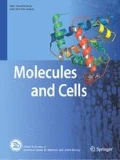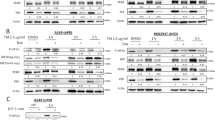Abstract
The activation of transglutaminase 2 (TG2), an enzyme that catalyzes post-translational modifications of proteins, has been implicated in apoptosis, cell adhesion and inflammatory responses. We previously reported that intracellular TG2 is activated under oxidative stress conditions, such as ultraviolet irradiation, ischemia-reperfusion, and hypoxia. In this study, we examined the effect of genotoxic stress on the intracellular activity of TG2 using doxorubicin which generates reactive oxygen species that lead to double-strand breakage of DNA. We demonstrated that doxorubicin elicits the persistent activation of TG2. Doxorubicin-induced TG2 activity was suppressed by treatment with caffeine at the early phase, N-acetylcysteine at the mid-phase, and EGTA at the late phase. However, treatment with a blocking antibody against TGFβ or toll-like receptor 2 showed no effect on TG2 activity, indicating that at least three different signaling pathways may be involved in the process of TG2 activation. In addition, using MEF cells defective for TG2 and cells overexpressing an activesite mutant of TG2, we revealed that doxorubicin-induced cell death is inversely correlated with TG2 activity. Our findings indicate that the persistent activation of TG2 by doxorubicin contributes to cell survival, suggesting that the mechanism-based inhibition of TG2 may be a novel strategy to prevent drug-resistance in doxorubicin treatment.
Similar content being viewed by others
References
Antonyak, M.A., McNeill, C.J., Wakshlag, J.J., Boehm, J.E., and Cerione, R.A. (2003). Activation of the Ras-ERK pathway inhibits retinoic acid-induced stimulation of tissue transglutaminase expression in NIH3T3 cells. J. Biol. Chem. 278, 15859–15866.
Antonyak, M.A., Miller, A.M., Jansen, J.M., Boehm, J.E., Balkman, C.E., Wakshlag, J.J., Page, R.L., and Cerione, R.A. (2004). Augmentation of tissue transglutaminase expression and activation by epidermal growth factor inhibit doxorubicin-induced apoptosis in human breast cancer cells. J. Biol. Chem. 279, 41461–41467.
Arai, M., Yoguchi, A., Takizawa, T., Yokoyama, T., Kanda, T., Kurabayashi, M., and Nagai, R. (2000). Mechanism of doxorubicin-induced inhibition of sarcoplasmic reticulum Ca2+-ATPase gene transcription. Circ. Res. 86, 8–14.
Boehm, J.E., Singh, U., Combs, C., Antonyak, M.A., and Cerione, R.A. (2002). Tissue transglutaminase protects against apoptosis by modifying the tumor suppressor protein p110 Rb. J. Biol. Chem. 277, 20127–20130.
Dalton, T.P., Shertzer, H.G., and Puga, A. (1999). Regulation of gene expression by reactive oxygen. Annu. Rev. Pharmacol. Toxicol. 39, 67–101.
Datta, S., Antonyak, M.A., and Cerione, R.A. (2006). Importance of Ca2+-dependent transamidation activity in the protection afforded by tissue transglutaminase against doxorubicin-induced apoptosis. Biochemistry (Mosc) 45, 13163–13174.
Ermak, G., and Davies, K.J. (2002). Calcium and oxidative stress: from cell signaling to cell death. Mol. Immunol. 38, 713–721.
Fesus, L., and Szondy, Z. (2005). Transglutaminase 2 in the balance of cell death and survival. FEBS Lett. 579, 3297–3302.
Gewirtz, D.A. (1999). A critical evaluation of the mechanisms of action proposed for the antitumor effects of the anthracycline antibiotics adriamycin and daunorubicin. Biochem. Pharmacol. 57, 727–741.
Han, J.A., and Park, S.C. (1999). Reduction of transglutaminase 2 expression is associated with an induction of drug sensitivity in the PC-14 human lung cancer cell line. J. Cancer Res. Clin. Oncol. 125, 89–95.
Herman, J.F., Mangala, L.S., and Mehta, K. (2006). Implications of increased tissue transglutaminase (TG2) expression in drugresistant breast cancer (MCF-7) cells. Oncogene 25, 3049–3058.
Iismaa, S.E., Mearns, B.M., Lorand, L., and Graham, R.M. (2009). Transglutaminases and disease: lessons from genetically engineered mouse models and inherited disorders. Physiol. Rev. 89, 991–1023.
Jang, G.Y., Jeon, J.H., Cho, S.Y., Shin, D.M., Kim, C.W., Jeong, E.M., Bae, H.C., Kim, T.W., Lee, S.H., Choi, Y., et al. (2010). Transglutaminase 2 suppresses apoptosis by modulating caspase 3 and NF-kappaB activity in hypoxic tumor cells. Oncogene 29, 356–367.
Jeon, J.H., Kim, C.W., Shin, D.M., Kim, K., Cho, S.Y., Kwon, J.C., Choi, K.H., Kang, H.S., and Kim, I.G. (2003). Differential incor poration of biotinylated polyamines by transglutaminase 2. FEBS Lett. 534, 180–184.
Jeong, E.M., Kim, C.W., Cho, S.Y., Jang, G.Y., Shin, D.M., Jeon, J.H., and Kim, I.G. (2009). Degradation of transglutaminase 2 by calcium-mediated ubiquitination responding to high oxidative stress. FEBS Lett. 583, 648–654.
Kim, D.S., Park, K.S., and Kim, S.Y. (2009). Silencing of TGase 2 sensitizes breast cancer cells to apoptosis by regulation of survival factors. Front. Biosci. 14, 2514–2521.
Kurz, E.U., Douglas, P., and Lees-Miller, S.P. (2004). Doxorubicin activates ATM-dependent phosphorylation of multiple downstream targets in part through the generation of reactive oxygen species. J. Biol. Chem. 279, 53272–53281.
Kweon, S.M., Lee, Z.W., Yi, S.J., Kim, Y.M., Han, J.A., Paik, S.G., and Ha, S.S. (2004). Protective role of tissue transglutaminase in the cell death induced by TNF-alpha in SH-SY5Y neuroblastoma cells. J. Biochem. Mol. Biol. 37, 185–191.
Lavin, M.F. (2008). Ataxia-telangiectasia: from a rare disorder to a paradigm for cell signalling and cancer. Nat. Rev. Mol. Cell Biol. 9, 759–769.
Müller, I., Niethammer, D., and Bruchelt, G. (1998). AAnthracyclinederived chemotherapeutics in apoptosis and free radical cytotoxicity. Int. J. Mol. Med. 1, 491–494.
Nozaki, N., Shishido, T., Takeishi, Y., and Kubota, I. (2004). Modulation of doxorubicin-induced cardiac dysfunction in toll-like receptor-2-knockout mice. Circulation 110, 2869–2874.
Oh, K., Park, H.B., Byoun, O.J., Shin, D.M., Jeong, E.M., Kim, Y.W., Kim, Y.S., Melino, G., Kim, I.G., and Lee, D.S. (2011). Epithelial transglutaminase 2 is needed for T cell interleukin-17 production and subsequent pulmonary inflammation and fibrosis in bleomycin-treated mice. J. Exp. Med. 208, 1707–1719.
Park, K.S., Kim, D.S., Jeong, K.C., and Kim, S.Y. (2009). Increase in transglutaminase 2 expression is associated with NF-kappaB activation in breast cancer tissues. Front. Biosci. 14, 1945–1951.
Sabisz, M., and Skladanowski, A. (2008). Modulation of cellular response to anticancer treatment by caffeine: inhibition of cell cycle checkpoints, DNA repair and more. Curr. Pharm. Biotechnol. 9, 325–336.
Sarkaria, J.N., Busby, E.C., Tibbetts, R.S., Roos, P., Taya, Y., Karnitz, L.M., and Abraham, R.T. (1999). Inhibition of ATM and ATR kinase activities by the radiosensitizing agent, caffeine. Cancer Res. 59, 4375–4382.
Shin, D.M., Jeon, J.H., Kim, C.W., Cho, S.Y., Kwon, J.C., Lee, H.J., Choi, K.H., Park, S.C., and Kim, I.G. (2004). Cell type-specific activation of intracellular transglutaminase 2 by oxidative stress or ultraviolet irradiation: implications of transglutaminase 2 in age-related cataractogenesis. J. Biol. Chem. 279, 15032–15039.
Shin, D.M., Kang, J., Ha, J., Kang, H.S., Park, S.C., Kim, I.G., and Kim, S.J. (2008a). Cystamine prevents ischemia-reperfusion injury by inhibiting polyamination of RhoA. Biochem. Biophys. Res. Commun. 365, 509–514.
Shin, D.M., Jeon, J.H., Kim, C.W., Cho, S.Y., Lee, H.J., Jang, G.Y., Jeong, E.M., Lee, D.S., Kang, J.H., Melino, G., et al. (2008b). TGFβ mediates activation of transglutaminase 2 in response to oxidative stress that leads to protein aggregation. FASEB J. 22, 2498–2507.
Smith, L., Watson, M.B., O’Kane, S.L., Drew, P.J., Lind, M.J., and Cawkwell, L. (2006). The analysis of doxorubicin resistance in human breast cancer cells using antibody microarrays. Mol. Cancer. Ther. 5, 2115–2120.
Sohn, J., Kim, T.I., Yoon, Y.H., Kim, J.Y., and Kim, S.Y. (2003). Novel transglutaminase inhibitors reverse the inflammation of allergic conjunctivitis. J. Clin. Invest. 111, 121–128.
Tombal, B., Denmeade, S.R., Gillis, J.M., and Isaacs, J.T. (2002). A supramicromolar elevation of intracellular free calcium ([Ca2+]i) is consistently required to induce the execution phase of apoptosis. Cell Death Differ. 9, 561–573.
Tsuruo, T., Naito, M., Tomida, A., Fujita, N., Mashima, T., Sakamoto, H., and Haga, N. (2003). Molecular targeting therapy of cancer: drug resistance, apoptosis and survival signal. Cancer Sci. 94, 15–21.
Wittlinger, M., Grabenbauer, G.G., Sprung, C.N., Sauer, R., and Distel L.V. (2007). Time and dose-dependent activation of p53 serine 15 phosphorylation among cell lines with different radiation sensitivity. Int. J. Radiat. Biol. 83, 245–257.
Yamaguchi, H., and Wang, H.G. (2006). Tissue transglutaminase serves as an inhibitor of apoptosis by cross-linking caspase 3 in thapsigargin-treated cells. Mol. Cell. Biol. 26, 569–579.
Yi, S.J., Kim, K.H., Choi, H.J., Yoo, J.O., Jung, H.I., Han, J.A., Kim, Y.M., Suh, I.B., and Ha, K.S. (2006). [Ca2+]-dependent generation of intracellular reactive oxygen species mediates maitotoxininduced cellular responses in human umbilical vein endothelial cells. Mol. Cells 21, 121–128.
Yuan, L., Choi, K., Khosla, C., Zheng, X., Higashikubo, R., Chicoine, M.R., and Rich, K.M. (2005). Tissue transglutaminase 2 inhibition promotes cell death and chemosensitivity in glioblastomas. Mol. Cancer Ther. 4, 1293–1302.
Author information
Authors and Affiliations
Corresponding author
About this article
Cite this article
Cho, SY., Jeong, E.M., Lee, JH. et al. Doxorubicin induces the persistent activation of intracellular transglutaminase 2 that protects from cell death. Mol Cells 33, 235–241 (2012). https://doi.org/10.1007/s10059-012-2201-9
Received:
Revised:
Accepted:
Published:
Issue Date:
DOI: https://doi.org/10.1007/s10059-012-2201-9




